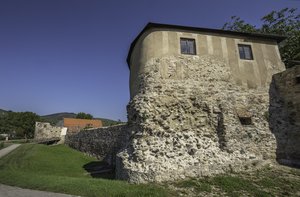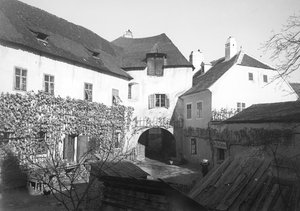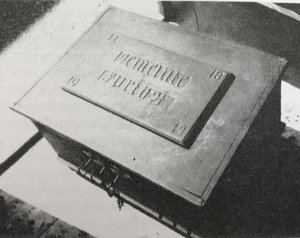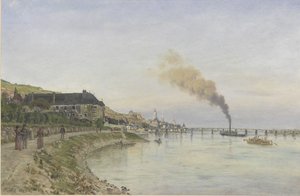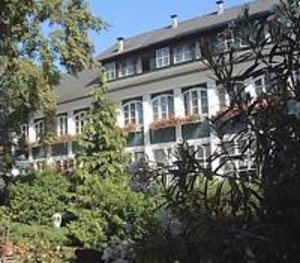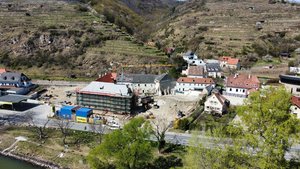More than 2000 years of history
DER FÖRTHOF
DER FÖRTHOF looks back on a long and historical past. The core of the central, historic building dates back to the second half of the 16th century and is a listed building. A previous building had already existed since 1220.
Förthof residence
The historic
The residence has several wings, and two to three floors. It irregularly encloses a courtyard. According to the art historian Georg Dehio, the complex's core goes back to the second half of the 16th century; however, the irregular polygonal northern areas with the entrance at the north-eastern corner could be of older origin. The western and southern tract have flights of stairs and pergolas in front and directed towards the courtyard for reaching the top floors. The building has contemporary stone window frames, and the regularly structured S-façade has a rectangular dungeon, and at the south-western corner a round dungeon over two floors with Renaissance decoration elements. The representative front designed as the main façade shows restored remains of ornamental painting from the late 16th century.
Matthias Chapel
The historic
At the northern side of the chapel, a stone stairway on the outside leads up to the gallery of the chapel. The interior has remarkably colorfully painted stone ribs, and two sitting niches with beautiful traceries. The altarpiece of the black and golden high altar "Glorie und Marter des hl. Matthias" (Glory and Torture of St. Matthew) was created in 1740 by Johann Gottlieb Starmayr. His student Martin Johann Schmidt (later called Kremser Schmidt) whose family lived here between 1726 to 1749, probably participated in the painting of this picture. The monumental oil painting "Allerheiligen" (All Saints) is dedicated to his workshop. Also important to mention are a wooden pulpit in late Renaissance style and a traditional Christ on the martyrs' pillar.
Förthof agricultural community
A brighter future
Förthof’s history has always been closely connected to the church and religion. The inhabitants of the Förthof municipality have always been very religious and faithful – but poor. In 1802 they realized that they could only obtain a better position and a brighter future if they walked together. They founded a unique cooperatively organized village community. Thanks to a loan from the Dürnstein Abbey and from Förthof wine house owner Peter Säuf, the cooperative was able to purchase the vineyards of Anna Maria Winterin, a widow from Stein. In the founding document, the "instrument," they laid out nine rules on how to cultivate the vineyard.
The Förthof chest
3 Keys to a brighter future
In order to keep this document and future financial statements safe, a chest made of oak wood was ordered by a carpenter in Stein. It was equipped with a handmade lock which can only be opened by three keys. The account books from 1804 have the following entry: “February 8, paid Düschler for the chest with 5 guilders, February 28, paid the locksmith for the chest with 10 guilders.” The keys were given to the local judge and to two jurors for safekeeping. All three needed to be present whenever the chest was opened. From the beginning, everything important regarding the cooperative was put into this chest - documents, annual common billings, all correspondence with the authorities, and all money earned – and was thoroughly locked. This is why 200 years of history and the fates of the Förthofer wine growers can still be found today in this chest.
Now, the three keys for the chest of the agricultural cooperative are reflected in our logo and refer to the unique history of this collaborative self-administration - arranged as a symbol of unity. As 3 keys to well-being and bliss.
Sources
- Fritz Mayer; Der Förthof – Ein Hauerdorf kämpft ums Überleben; Österreichisches Literaturforum; 1994;
- Dehio Niederösterreich – Nördlich der Donau; Verlag Ferdinand Berger & Söhne; 1990;
- Niederösterreichische Burgen Online
- Kirchen am Fluss
- Wikipedia - Förthof
- Wikipedia - Markgrafen und Herzöge von Österreich im Mittelalter
- Wikipedia - Friedrich II. (Österreich)
- Wikipedia - Ferdinand II. (HRR)



